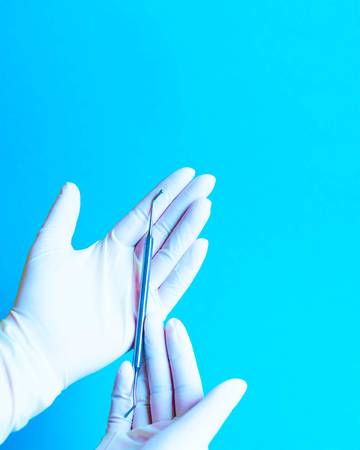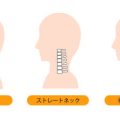Introduction to Non-Surgical Wrinkle Reduction
In recent years, there has been a significant surge in the popularity of non-surgical wrinkle reduction treatments across Britain. As individuals increasingly seek effective ways to rejuvenate their appearance without the downtime and risks associated with surgery, non-invasive procedures have become a preferred choice for many. This growing trend is evident in clinics throughout the UK, where advanced technologies and innovative techniques are being used to address signs of ageing such as fine lines and wrinkles.
The shift towards non-surgical solutions is driven by several key benefits they offer when compared to traditional surgical options. Non-invasive treatments typically require little to no recovery time, enabling patients to return to their daily routines almost immediately. Additionally, these procedures tend to carry fewer risks and side effects, making them particularly appealing for those who wish to enhance their look discreetly and safely. As demand continues to rise, British practitioners are at the forefront of offering a diverse range of scientifically backed treatments that deliver noticeable results without the need for invasive surgery.
Injectable Treatments: Anti-Wrinkle Injections and Dermal Fillers
Among the top non-surgical wrinkle reduction treatments available in Britain, injectable solutions such as anti-wrinkle injections (botulinum toxin) and dermal fillers (primarily hyaluronic acid-based) are widely recognised for their effectiveness and relatively quick results. These treatments are particularly popular across the UK due to their minimally invasive nature and minimal downtime, which suits the British preference for subtle, natural-looking enhancements.
How Do Injectable Treatments Work?
Anti-wrinkle injections, commonly referred to in Britain simply as wrinkle relaxers or Botox, utilise botulinum toxin to temporarily block nerve signals to targeted facial muscles. This action reduces muscle activity that causes expression lines, particularly on the forehead, around the eyes (crow’s feet), and between the brows. Results typically appear within a week and last between three to six months.
Dermal fillers, on the other hand, predominantly use hyaluronic acid—a naturally occurring substance in the skin—to restore lost volume, smooth out static wrinkles, and enhance facial contours. These are most frequently used for nasolabial folds, marionette lines, cheeks, and lips. The effects of dermal fillers can last from six months up to 18 months, depending on the product used and treatment area.
Comparison Table: Anti-Wrinkle Injections vs Dermal Fillers
| Treatment Type | Main Ingredient | Primary Purpose | Typical Duration | Common Treatment Areas |
|---|---|---|---|---|
| Anti-Wrinkle Injections | Botulinum Toxin | Muscle Relaxation Reduces Dynamic Wrinkles |
3-6 Months | Forehead Crow’s Feet Frown Lines |
| Dermal Fillers | Hyaluronic Acid | Adds Volume Smooths Static Wrinkles |
6-18 Months | Lips Cheeks Nasolabial Folds Marionette Lines |
British Considerations for Injectable Treatments
The UK aesthetic industry is highly regulated, with increasing emphasis on practitioner qualifications and patient safety. It is common for British clients to seek a subtle enhancement rather than dramatic changes; therefore, consultations often focus on achieving natural results that maintain individual character. Furthermore, reputable clinics across Britain adhere strictly to guidelines regarding hygiene standards and informed consent. Patients are encouraged to select practitioners registered with professional bodies such as the General Medical Council (GMC) or Nursing and Midwifery Council (NMC). This approach ensures not only optimal outcomes but also aligns with British cultural values of professionalism and understated refinement.
![]()
3. Laser and Light-Based Therapies
When considering non-surgical wrinkle reduction in the UK, laser and light-based therapies have become increasingly popular for their precision and versatility. These advanced technologies, including laser resurfacing and Intense Pulsed Light (IPL) treatments, are widely available in reputable clinics from London to Edinburgh.
Laser Treatments: Fractional lasers and ablative or non-ablative resurfacing devices work by delivering controlled energy deep into the skin layers, stimulating collagen production and encouraging cellular renewal. This results in smoother, firmer skin with a noticeable reduction in fine lines and wrinkles. British clinics often use FDA-approved systems such as Fraxel or CO2 lasers, which are suitable for targeting deeper wrinkles or sun-damaged areas.
Intense Pulsed Light (IPL): IPL is a versatile treatment that uses broad-spectrum light to address early signs of ageing like fine lines, pigmentation, and uneven skin tone. Unlike lasers, IPL is less aggressive but still effective at stimulating collagen while evening out complexion. It’s particularly favoured for those with mild to moderate ageing concerns who prefer minimal downtime.
Suitability for Different Skin Types
British practitioners take great care in matching the right technology to each individual’s skin type. For example, certain lasers may be better suited for lighter complexions due to reduced risk of pigmentation changes, whereas IPL can be adjusted to accommodate various tones with appropriate safety settings. A professional consultation is essential to assess your unique needs and ensure optimal results without unnecessary risks.
What Patients Can Expect During and After Treatment
The procedure typically begins with a thorough cleansing of the skin, followed by the application of a numbing cream if necessary. Most patients report only mild discomfort—often described as a snapping sensation—during both laser and IPL sessions. Treatments usually last between 30 minutes to an hour depending on the area addressed. While some redness or swelling is common immediately after the procedure, these effects generally subside within a few days. Patients are advised to avoid direct sunlight and apply high-factor SPF during recovery to protect their rejuvenated skin.
With minimal downtime required and visible improvements appearing within weeks, laser and light-based therapies continue to be a top choice for those seeking cutting-edge wrinkle reduction across Britain.
4. Microneedling and Radiofrequency Treatments
Among the most sought-after non-surgical wrinkle reduction therapies in the UK are microneedling and radiofrequency (RF) treatments, both of which are considered collagen induction therapies. These procedures have gained considerable traction in British clinics due to their minimally invasive nature, impressive results, and suitability for a range of skin types.
How Collagen Induction Therapies Work
Microneedling involves the use of fine needles to create micro-injuries on the skin’s surface, prompting a natural healing response that stimulates collagen and elastin production. When combined with radiofrequency energy—delivered directly into the deeper layers of the skin—this process is further enhanced, resulting in tighter, smoother skin with diminished fine lines and wrinkles.
Popularity and Typical Results in UK Clinics
British clinics frequently recommend microneedling and RF treatments for clients seeking visible rejuvenation without significant downtime. Clients often report:
- Noticeable improvement in skin texture and firmness within several weeks
- Gradual reduction in the appearance of fine lines, particularly around the eyes and mouth
- A brighter, more youthful complexion after a series of sessions
| Treatment Type | Sessions Recommended | Downtime |
|---|---|---|
| Microneedling | 3–6 sessions | Minimal (1–2 days redness) |
| Microneedling + RF | 3–4 sessions | Mild swelling/redness (1–3 days) |
Aftercare Essentials for British Clients
Proper aftercare is crucial to maximise results and minimise potential side effects. UK practitioners typically advise:
- Avoiding direct sun exposure and using broad-spectrum SPF daily, especially given Britain’s unpredictable weather patterns
- Keeping the skin hydrated with gentle moisturisers free from harsh fragrances or actives during the recovery period
- Refraining from strenuous exercise or hot baths for at least 24 hours post-procedure to reduce swelling and irritation
With careful aftercare and adherence to clinic recommendations, microneedling and radiofrequency remain top choices for Britons seeking effective, non-surgical solutions to combat wrinkles while maintaining a natural look.
5. Chemical Peels and Skin Resurfacing
Chemical peels and skin resurfacing treatments have become a mainstay in many British skincare clinics, offering a non-surgical approach to visible wrinkle reduction and overall skin rejuvenation. Superficial to medium-depth chemical peels are particularly popular across the UK, largely due to their minimal downtime and proven efficacy. These procedures typically utilise solutions such as glycolic acid, lactic acid, or trichloroacetic acid (TCA) to gently exfoliate the upper layers of the skin, thereby encouraging cellular renewal.
The benefits of chemical peels for wrinkle reduction are twofold: firstly, they smoothen fine lines by removing damaged surface cells; secondly, they stimulate collagen production, which is essential for maintaining youthful skin elasticity. British clinics often recommend superficial peels for those new to aesthetic treatments or individuals seeking a brighter, more even complexion with limited recovery time. Medium-depth peels, on the other hand, penetrate slightly deeper into the skin and are effective for addressing more pronounced wrinkles and textural irregularities.
Across Britain, many practitioners tailor chemical peel protocols according to skin type and specific concerns—ensuring safety while maximising results. Patients frequently report not only a reduction in fine lines but also improvement in sun damage, pigmentation, and overall skin clarity. As with any professional cosmetic treatment in the UK, it is advisable to consult with a qualified practitioner who can recommend the most appropriate peel strength and aftercare regimen for optimal results.
6. Choosing the Right Treatment and Aftercare in Britain
Selecting the most suitable non-surgical wrinkle reduction treatment is a highly individual process, especially within the British context where regulations and patient safety are paramount. Begin by consulting with a qualified practitioner registered with reputable bodies such as the General Medical Council (GMC), the Care Quality Commission (CQC), or the Joint Council for Cosmetic Practitioners (JCCP). This ensures your chosen clinic adheres to strict UK standards.
Assessing Your Needs
Consider your specific skin concerns, overall health, and desired outcome. For example, if you seek subtle rejuvenation with minimal downtime, treatments like micro-needling or chemical peels may be preferable. For more pronounced wrinkles, options such as dermal fillers or anti-wrinkle injections could be more effective. Always discuss your expectations openly during your consultation to receive tailored advice.
Understanding British Regulations
The UK has stringent rules governing who can perform non-surgical cosmetic procedures. Ensure your practitioner uses CE-marked products and is fully insured. Ask about their experience and request to see before-and-after photographs of previous clients. Transparency and professionalism are key indicators of a reputable provider.
Essential Aftercare Tips
Aftercare plays a crucial role in achieving optimal results and reducing risks. Typical recommendations include avoiding strenuous exercise, excessive heat exposure, and alcohol for at least 24 hours post-treatment. Follow all aftercare instructions provided by your practitioner, which may also include applying gentle skincare products, using high-factor sunscreen, and attending follow-up appointments as advised.
By choosing regulated practitioners and adhering to proper aftercare protocols, you not only enhance the effectiveness of your chosen wrinkle reduction treatment but also prioritise safety—a value held in high regard throughout Britain’s aesthetic industry.


